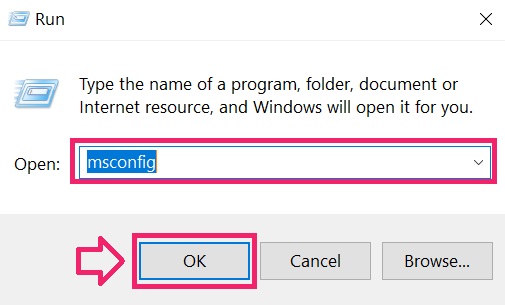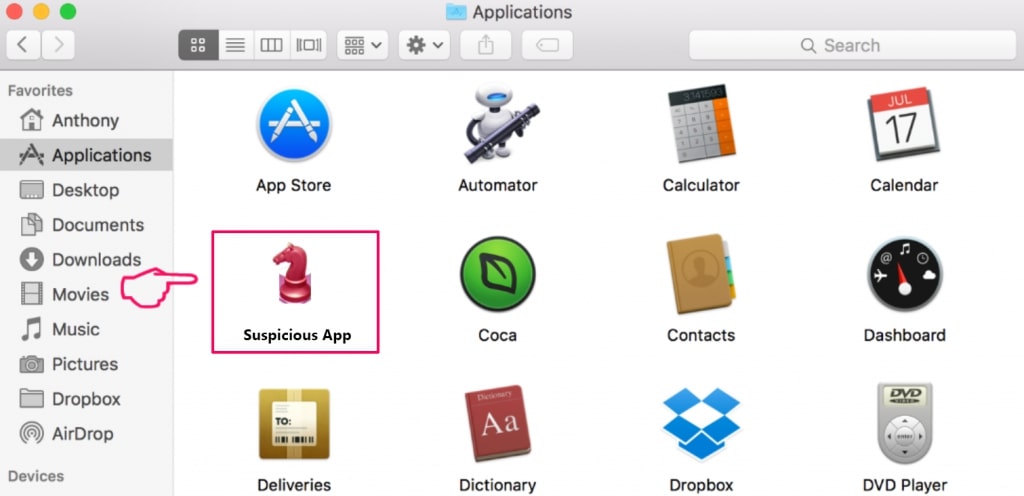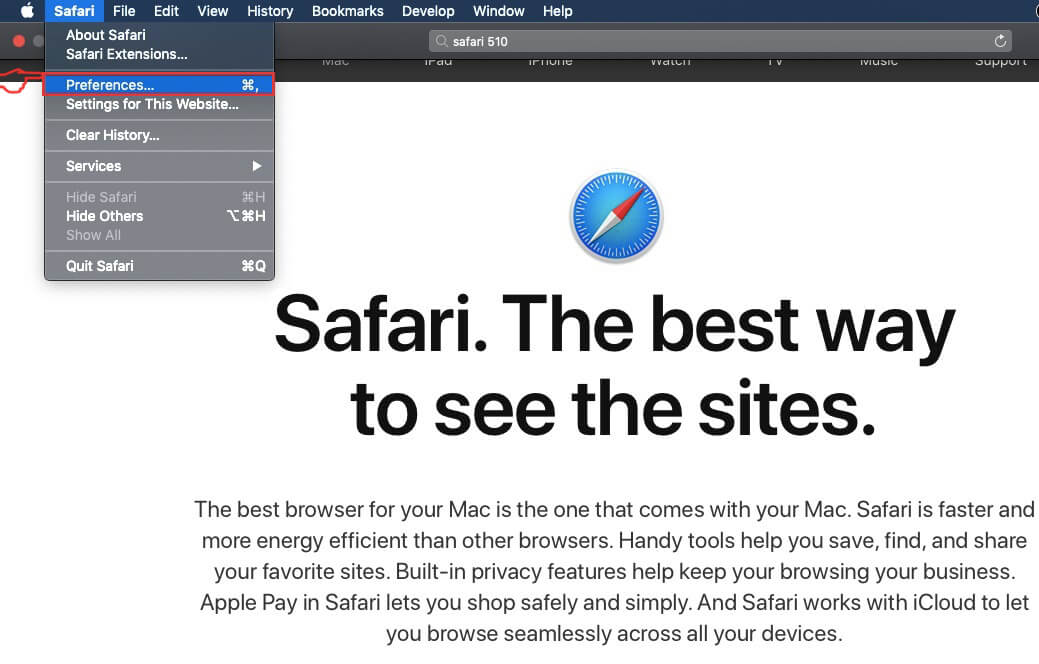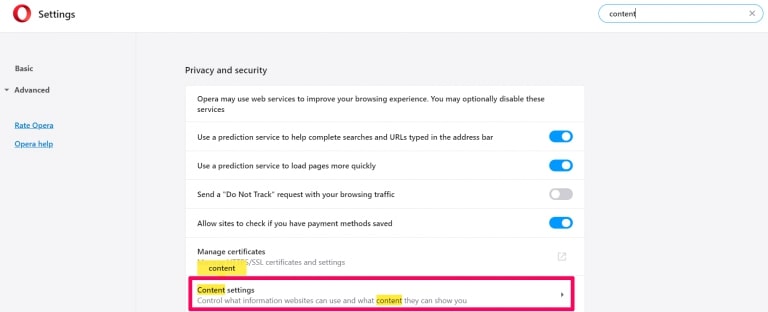How to Get Rid of Redirects on Chrome
Chrome Redirect VirusChrome Redirect Virus SummaryHow to Remove Chrome Redirect Virus from Chrome
Chrome Redirect Virus
Google Chrome is a legitimate browser application. However, many users on the Internet use Chrome redirect virus as a term very often, to describe issues with the legitimate browser causing redirects of your browsing sessions to suspicious websites.
It could be either of an adware or browser hijacker type. Either way, the presence of this program on your device could be misused by its unidentified owners for the collection of various details of yours.

What Is Chrome Redirect Virus?
The actual redirect virus keeps appearing on the Google browser as users report. The redirect will stick to the browser with the goal to force you to visit bogus websites. Make sure that you do not open any of the presented links and that you do not click on advertisements and pop-ups that can constantly show up.
Issues with Chrome are usually caused by potentially unwanted programs that infiltrate your system without your knowledge. So in case, your browser is constantly loading some strange web pages that present questionable content, you need to scan your system for any present undesired apps. In this article, we will explain how to remove the redirect virus from Chrome.

Chrome Redirect Virus Summary
| Name | Chrome Redirect Virus |
| Type | Browser Hijacker, Adware, PUP |
| Short Description | Aims to heavily modify web browser settings in order to collect data and display redirects and other types of ads. |
| Symptoms | The software may slow down your computer by displaying various advertisements. It may also change your search engine or install extra undesired applications. |
| Distribution Method | Freeware Installations, Bundled Packages |
| Detection Tool | See If Your System Has Been Affected by malware Download Malware Removal Tool |
| User Experience | Join Our Foru |
Many people use Google Chrome and respectively, they often have some issue with secondary add-ons or scripts which affect its performance. Chrome Redirect Virus is a can refer to different viruses, malware and PUPs (potentially unwanted programs) that affect the official browser in some way which causes a hindrance. That is why it is important for a user to figure out what is affecting their browser and if a PUP or a threat should be removed. Keep reading to learn how to differentiate between harmless and harmful Chrome redirects and what you should do next.
The annoying issue with all of the redirects may occur as a result of several things:
- Unnoticed installation of a potentially unwanted program
- Visit to a corrupted website
- Click on a malicious ad
The most common one is the installation of some kind of a potentially unwanted program – an adware, a browser hijacker or a browser extension. There are many suspicious and potentially unwanted programs that are lurking around the web. They all want to trick you into running their configuration code on your operating system inadvertently. This issue often occurs with the help of software bundles. So it may be the last installed media player, file converter, weather toolbar, online streaming app, or another useful app that has delivered the undesired app associated with the Chrome redirect virus.
What Are the Symptoms of Chrome Redirect Virus?
The term Chrome redirect virus is used to summarize a group of computer infections that are known to affect the web browser's settings. An infection with such a virus could be recognized by many unexpected redirects registered during regular browsing sessions. The redirects could land you on various suspicious websites like Bodloster.com and similar ones.
These websites tend to generate pop-up windows that require subscriptions to push notifications. Beware as this issue may be very annoying. Once these push notifications are enabled, they will start to appear in the browser and on the desktop. As a result, the affected browser may get sluggish or unresponsive. Since these annoying pop-ups may be related to corrupted, hence, dangerous websites, we advise you to disable them as soon as possible.
All redirect activities are known as the main symptom that indicates the presence of a Potentially Unwanted Program. So it is possible that a PUP is currently running on your machine. Such a program is usually designed to infiltrate your system, access your Chrome web browser and then alter its settings with the main idea to become able to display different types of advertisements. Usually, all the mentioned processes occur without your knowledge.
By activating different tracking technologies they could obtain details like:
- Visited URLs and websites
- Browser's home page
- Search queries
- Search queries on the visited web pages
- Type of used browser
- Operating system type
- Internet protocol (IP) address
- Geographic location
- The domain name of current Internet service provider (ISP)
- Diagnostic information which describes how their Services are operating on the system
Once you become a victim of unsolicited data collection you may start receiving lots of annoying ads based on your interests as well. All other popular web browsers including Mozilla Firefox, Internet Explorer, Microsoft Edge, Opera, and Safari could be affected by undesired programs that redirect browsing traffic.
Google Chrome Redirect Virus is still affecting the computers of unsuspecting users who have stumbled upon a page dedicated to this redirect. Indeed, the Google Chrome Redirect Virus is cunning as it can hide behind hundreds of redirects and you can not remove it so easily. It continues to be a threat to many people browsing the Web. Watch out and stay vigilant, while trying not to get the Google Chrome Redirect Virus on your computer machine.
User reports about redirects to unwanted pages while using the Chrome browser continue to appear.
For example, one user has reported encountering a problem when opening a new tab. This is what the user shared:
The theme page that was set disappeared and in its place, there is a white page that mimics the Google page but with a Bing search box. At the bottom of the page it says, "© 2019 – search-operator.com." I also noticed that there is a green blinking link in the upper left corner of my Gmail page as well as a green ">" symbol that was never there before. I have tried deleting and reloading Chrome as well as resetting my defaults but I cannot reset or replace this tab page. I also scanned for viruses and that did not address the problem.
In this case, the user's browser was hijacked by the search-operator.com bogus search engine, but the redirects may vary from case to case.
Should You Remove Chrome Redirect Virus?
Well, the short answer is yes, you should. Even though the undesired apps associated with the Google Chrome Redirect virus are not malicious, they still pose a certain danger to your online security. Their unknown developers may attempt to access your device and drop a malicious program to steal sensitive data or disclose harvested data on dark web markets. As regards, the ads generated by such type of apps, they can also be dangerous, if related to corrupted websites.
As it has become evident by multiple user reports, Google Chrome is not the only browser that is affected by unwanted and potentially malicious redirects. Below you can find a list of currently active redirects that you should be aware of:
- Bing Redirect "Virus"
- Yahoo Redirect "Virus"
- Safari Redirect "Virus"
- Firefox Redirect "Virus"
Now let's move on to the removal part and reveal the steps that will help you get rid of your redirects.

How to Remove Chrome Redirect Virus from Chrome
To fully eliminate undesired programs and get rid of redirects on Chrome, we recommend a step-by-step removal guide. The guide presented below includes properly ordered steps on how to isolate harmful files and then remove them from your computer and browser as well. It enables you to choose between manual and automatic removal approach. You need to combine the steps if you want to fully get rid of installed undesired programs. This way you will also strengthen the security of your device.
If you have any questions or need additional help with the removal process, don't hesitate to leave a comment.
Gergana Ivanova
Highly motivated writer with 5+ years of experience writing for ransomware, malware, adware, PUPs, and other cybersecurity-related issues. As a writer, I strive to create content that is based on thorough technical research. I find joy in the process of creating articles that are easy to understand, informative, and useful. Follow me on Twitter (@IRGergana) for the latest in the field of computer, mobile, and online security.
More Posts
Follow Me:

- Guide 1: How to Remove Chrome Redirect Virus from Windows.
- Guide 2: Get rid of Chrome Redirect Virus on Mac OS X.
- Guide 3: Remove Chrome Redirect Virus in Google Chrome.
- Guide 4: Erase Chrome Redirect Virus from Mozilla Firefox.
- Guide 5: Uninstall Chrome Redirect Virus from Microsoft Edge.
- Guide 6: Remove Chrome Redirect Virus from Safari.
- Guide 7: Eliminate Chrome Redirect Virus from Internet Explorer.
- Guide 8: Disable Chrome Redirect Virus Push Notifications in Your Browsers.
Windows Mac OS X Google Chrome Mozilla Firefox Microsoft Edge Safari Internet Explorer Stop Push Pop-ups
How to Remove Chrome Redirect Virus from Windows.
Step 1: Boot Your PC In Safe Mode to isolate and remove Chrome Redirect Virus





Step 2: Uninstall Chrome Redirect Virus and related software from Windows
Here is a method in few easy steps that should be able to uninstall most programs. No matter if you are using Windows 10, 8, 7, Vista or XP, those steps will get the job done. Dragging the program or its folder to the recycle bin can be a very bad decision. If you do that, bits and pieces of the program are left behind, and that can lead to unstable work of your PC, errors with the file type associations and other unpleasant activities. The proper way to get a program off your computer is to Uninstall it. To do that:


 Follow the instructions above and you will successfully uninstall most programs.
Follow the instructions above and you will successfully uninstall most programs.
Step 3: Clean any registries, created by Chrome Redirect Virus on your computer.
The usually targeted registries of Windows machines are the following:
- HKEY_LOCAL_MACHINE\Software\Microsoft\Windows\CurrentVersion\Run
- HKEY_CURRENT_USER\Software\Microsoft\Windows\CurrentVersion\Run
- HKEY_LOCAL_MACHINE\Software\Microsoft\Windows\CurrentVersion\RunOnce
- HKEY_CURRENT_USER\Software\Microsoft\Windows\CurrentVersion\RunOnce
You can access them by opening the Windows registry editor and deleting any values, created by Chrome Redirect Virus there. This can happen by following the steps underneath:


 Tip: To find a virus-created value, you can right-click on it and click "Modify" to see which file it is set to run. If this is the virus file location, remove the value.
Tip: To find a virus-created value, you can right-click on it and click "Modify" to see which file it is set to run. If this is the virus file location, remove the value.
IMPORTANT!
Before starting "Step 4", please boot back into Normal mode, in case you are currently in Safe Mode.
This will enable you to install and use SpyHunter 5 successfully.
Step 4: Scan for Chrome Redirect Virus with SpyHunter Anti-Malware Tool



Step 1: Uninstall Chrome Redirect Virus and remove related files and objects In case you cannot remove Chrome Redirect Virus via Step 1 above: In case you cannot find the virus files and objects in your Applications or other places we have shown above, you can manually look for them in the Libraries of your Mac. But before doing this, please read the disclaimer below: Disclaimer! If you are about to tamper with Library files on Mac, be sure to know the name of the virus file, because if you delete the wrong file, it may cause irreversible damage to your MacOS. Continue on your own responsibility! You can repeat the same procedure with the following other Library directories: → ~/Library/LaunchAgents Tip: ~ is there on purpose, because it leads to more LaunchAgents. Step 2: Scan for and remove Chrome Redirect Virus files from your Mac When you are facing problems on your Mac as a result of unwanted scripts and programs such as Chrome Redirect Virus, the recommended way of eliminating the threat is by using an anti-malware program. SpyHunter for Mac offers advanced security features along with other modules that will improve your Mac's security and protect it in the future. Download SpyHunter for Mac Step 1: Start Google Chrome and open the drop menu Step 2: Move the cursor over "Tools" and then from the extended menu choose "Extensions" Step 3: From the opened "Extensions" menu locate the unwanted extension and click on its "Remove" button. Step 4: After the extension is removed, restart Google Chrome by closing it from the red "X" button at the top right corner and start it again. Step 1: Start Mozilla Firefox. Open the menu window Step 2: Select the "Add-ons" icon from the menu. Step 3: Select the unwanted extension and click "Remove" Step 4: After the extension is removed, restart Mozilla Firefox by closing it from the red "X" button at the top right corner and start it again. Step 1: Start Edge browser. Step 2: Open the drop menu by clicking on the icon at the top right corner. Step 3: From the drop menu select "Extensions". Step 4: Choose the suspected malicious extension you want to remove and then click on the gear icon. Step 5: Remove the malicious extension by scrolling down and then clicking on Uninstall. Step 1: Start the Safari app. Step 2: After hovering your mouse cursor to the top of the screen, click on the Safari text to open its drop down menu. Step 3: From the menu, click on "Preferences". Step 4: After that, select the 'Extensions' Tab. Step 5: Click once on the extension you want to remove. Step 6: Click 'Uninstall'. A pop-up window will appear asking for confirmation to uninstall the extension. Select 'Uninstall' again, and the Chrome Redirect Virus will be removed. Step 1: Start Internet Explorer. Step 2: Click on the gear icon labeled 'Tools' to open the drop menu and select 'Manage Add-ons' Step 3: In the 'Manage Add-ons' window. Step 4: Select the extension you want to remove and then click 'Disable'. A pop-up window will appear to inform you that you are about to disable the selected extension, and some more add-ons might be disabled as well. Leave all the boxes checked, and click 'Disable'. Step 5: After the unwanted extension has been removed, restart Internet Explorer by closing it from the red 'X' button located at the top right corner and start it again. Turn Off Push Notifications from Google Chrome To disable any Push Notices from Google Chrome browser, please follow the steps below: Step 1: Go to Settings in Chrome. Step 2: In Settings, select "Advanced Settings": Step 3: Click "Content Settings": Step 4: Open "Notifications": Step 5: Click the three dots and choose Block, Edit or Remove options: Remove Push Notifications on Firefox Step 1: Go to Firefox Options. Step 2: Go to "Settings", type "notifications" in the search bar and click "Settings": Step 3: Click "Remove" on any site you wish notifications gone and click "Save Changes" Stop Push Notifications on Opera Step 1: In Opera, press ALT+P to go to Settings Step 2: In Setting search, type "Content" to go to Content Settings. Step 3: Open Notifications: Step 4: Do the same as you did with Google Chrome (explained below): Eliminate Push Notifications on Safari Step 1: Open Safari Preferences. Step 2: Choose the domain from where you like push pop-ups gone and change to "Deny" from "Allow".
Windows Mac OS X Google Chrome Mozilla Firefox Microsoft Edge Safari Internet Explorer Stop Push Pop-ups
Get rid of Chrome Redirect Virus from Mac OS X.
1. Hit the ⇧+⌘+U keys to open Utilities. Another way is to click on "Go" and then click "Utilities", like the image below shows: 







/Library/LaunchDaemons
Windows Mac OS X Google Chrome Mozilla Firefox Microsoft Edge Safari Internet Explorer Stop Push Pop-ups
Remove Chrome Redirect Virus from Google Chrome.



Windows Mac OS X Google Chrome Mozilla Firefox Microsoft Edge Safari Internet Explorer Stop Push Pop-ups
Erase Chrome Redirect Virus from Mozilla Firefox.



Windows Mac OS X Google Chrome Mozilla Firefox Microsoft Edge Safari Internet Explorer Stop Push Pop-ups
Uninstall Chrome Redirect Virus from Microsoft Edge.




Windows Mac OS X Google Chrome Mozilla Firefox Microsoft Edge Safari Internet Explorer Stop Push Pop-ups
Remove Chrome Redirect Virus from Safari.



Windows Mac OS X Google Chrome Mozilla Firefox Microsoft Edge Safari Internet Explorer Stop Push Pop-ups
Eliminate Chrome Redirect Virus from Internet Explorer.



Remove Push Notifications caused by Chrome Redirect Virus from Your Browsers.













How to Get Rid of Redirects on Chrome
Source: https://sensorstechforum.com/remove-chrome-redirect-virus/